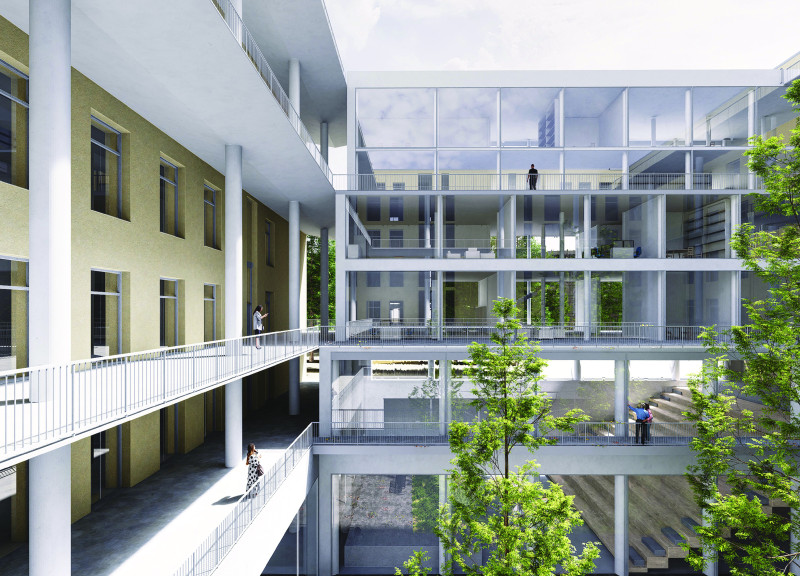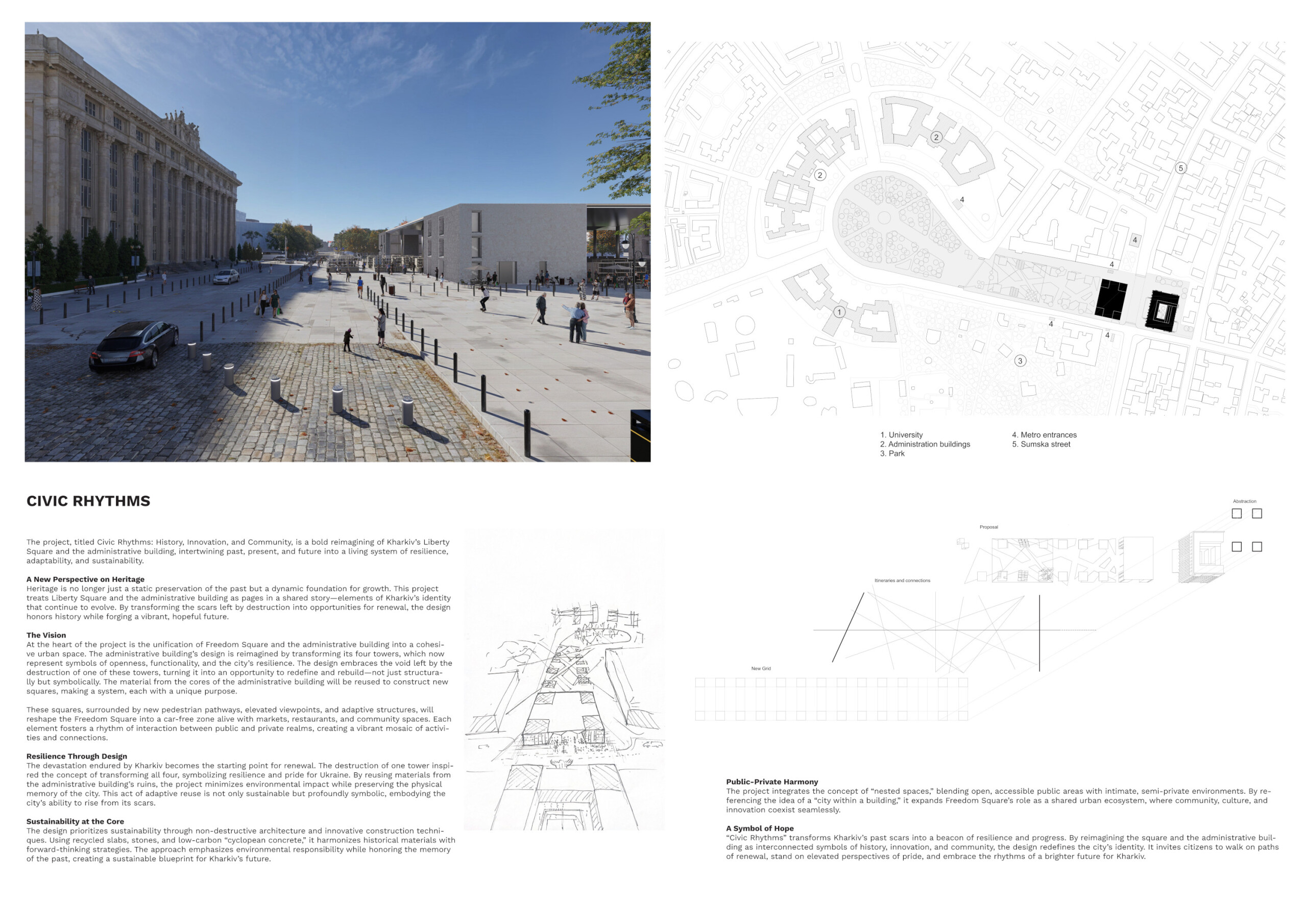5 key facts about this project
The primary function of the structure is to serve as a multipurpose community space, designed to foster social interaction and engagement among its users. This is evident in the careful layout of the interior spaces, which includes open-plan areas conducive to gatherings, events, and recreational activities. The design prioritizes versatility, allowing for a variety of configurations that cater to different community needs, from cultural events to educational workshops.
One of the most important aspects of the project is its materiality, which reflects both durability and a commitment to environmental stewardship. The use of locally sourced materials ensures that the building resonates with its geographical context while minimizing transportation impacts. Key materials include sustainably harvested timber, which gives warmth to the interiors, and recycled steel elements that contribute to the structural integrity of the edifice. Additionally, expansive glass facades provide ample natural light, blurring the boundary between indoor and outdoor spaces while promoting energy efficiency through passive solar design.
In addressing the unique design approaches, the project skillfully integrates biophilic design principles that enhance occupants' connection to nature. Features such as green roofs and vertical gardens are not merely decorative; they serve significant ecological functions by improving air quality and promoting biodiversity within the urban fabric. The thoughtfully landscaped outdoor areas provide essential green space, encouraging users to engage with the landscape and promoting mental well-being.
Another noteworthy element is the attention to the building’s footprint and orientation. The careful positioning of the structure takes advantage of natural light and prevailing winds, ensuring optimal energy performance throughout the year. The design incorporates shaded areas to protect users from the elements while facilitating outdoor activities in a comfortable environment. This aspect of the project underscores a broader commitment to sustainable architecture, which seeks to reduce energy consumption and environmental impact.
The project also stands out for its innovative use of technology in construction and operation. Smart building systems are integrated seamlessly, allowing for efficient management of lighting, heating, and cooling based on occupancy and environmental conditions. Through this integration, the building not only functions effectively but demonstrates a forward-thinking approach to resource management.
The overall design encourages interaction by aligning with community pathways and integrates seamlessly into the existing urban grid. Its inviting entrance draws people in, positioning the structure as a central hub for social activities. This focus on creating a welcoming atmosphere is evident in the architectural details, from the choice of facade materials to the welcoming landscaping that flanks the approach.
In terms of architectural plans and sections, the layout reflects a deliberate organization of spaces that prioritize ease of movement and accessibility. Each area is designed to serve specific functions, while also allowing for flexible use. This adaptability is crucial in meeting the evolving needs of the community over time.
As the project unfolds, it becomes clear that it not only addresses immediate needs but also contributes meaningfully to the community’s long-term vision. Its design is a well-considered response to contemporary challenges in architecture, emphasizing sustainability, community engagement, and a respect for the environment.
To uncover more about this impactful architectural project, including its detailed design elements, architectural plans, sections, and ideas, readers are encouraged to explore the project presentation further. Delving into these aspects will provide a deeper understanding of the unique characteristics and intentionality behind this noteworthy architectural endeavor.


 Louis Paul Georges Chapsal,
Louis Paul Georges Chapsal,  Ahmet Alper Gultekin,
Ahmet Alper Gultekin,  Toni Bosch Jerez
Toni Bosch Jerez 























